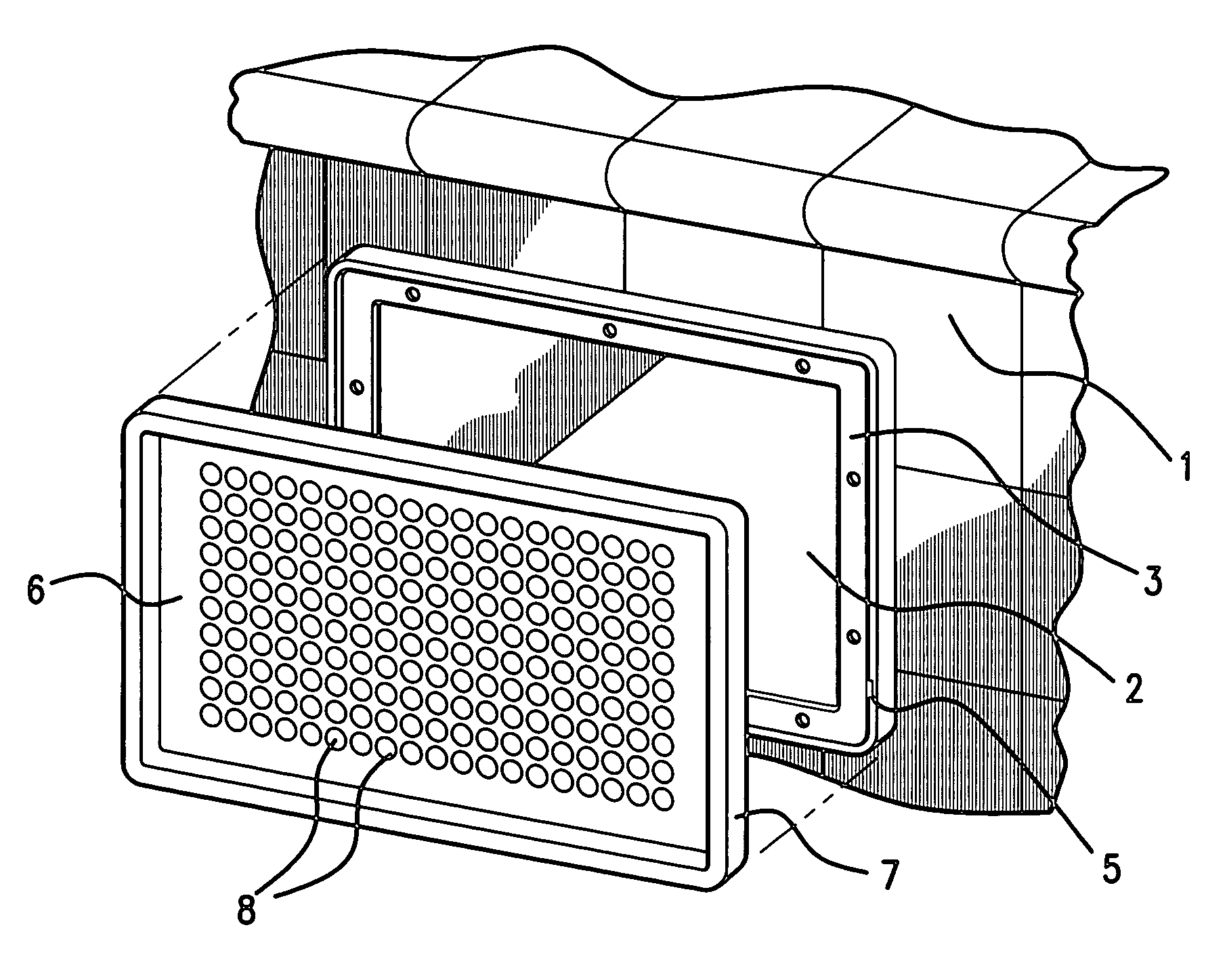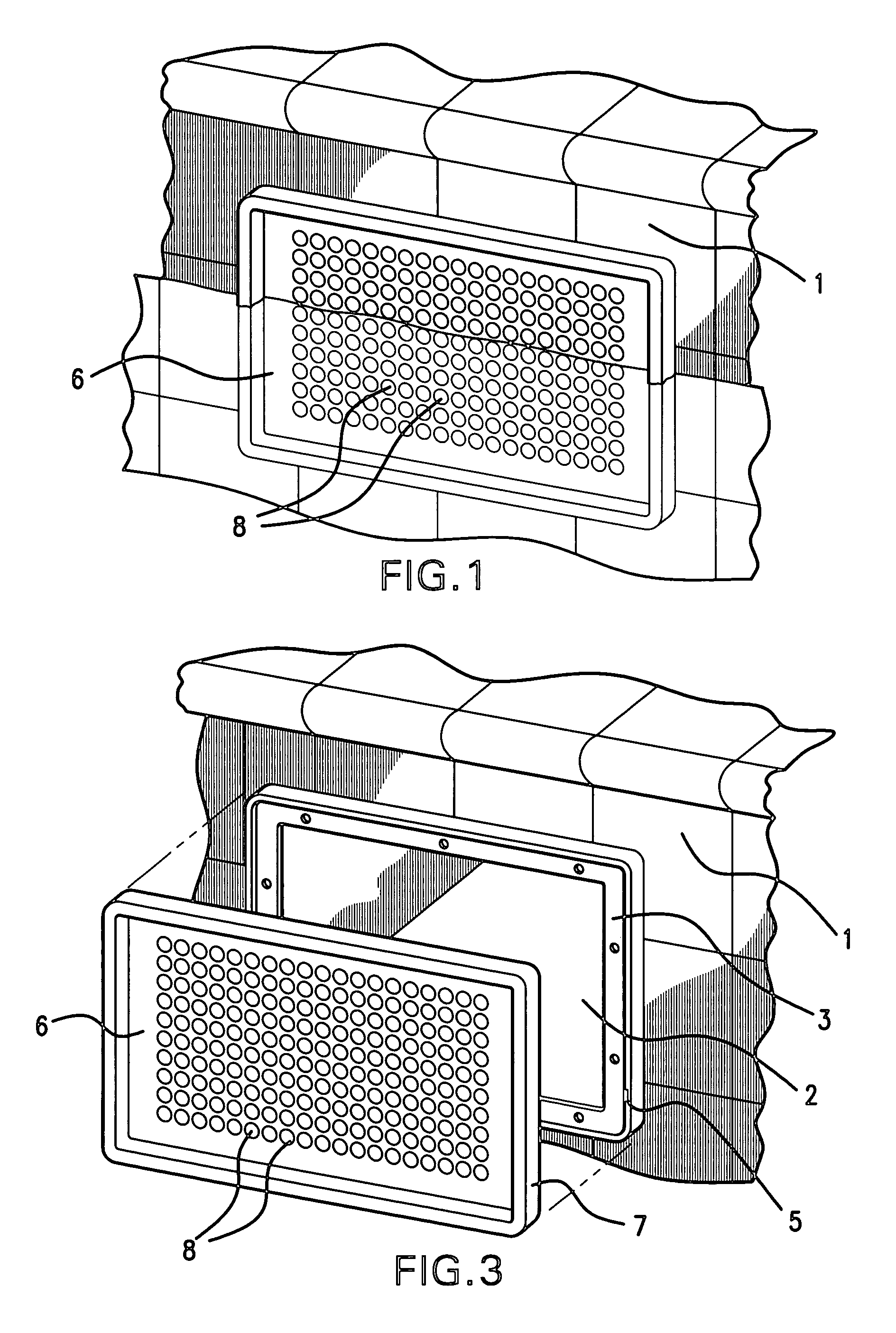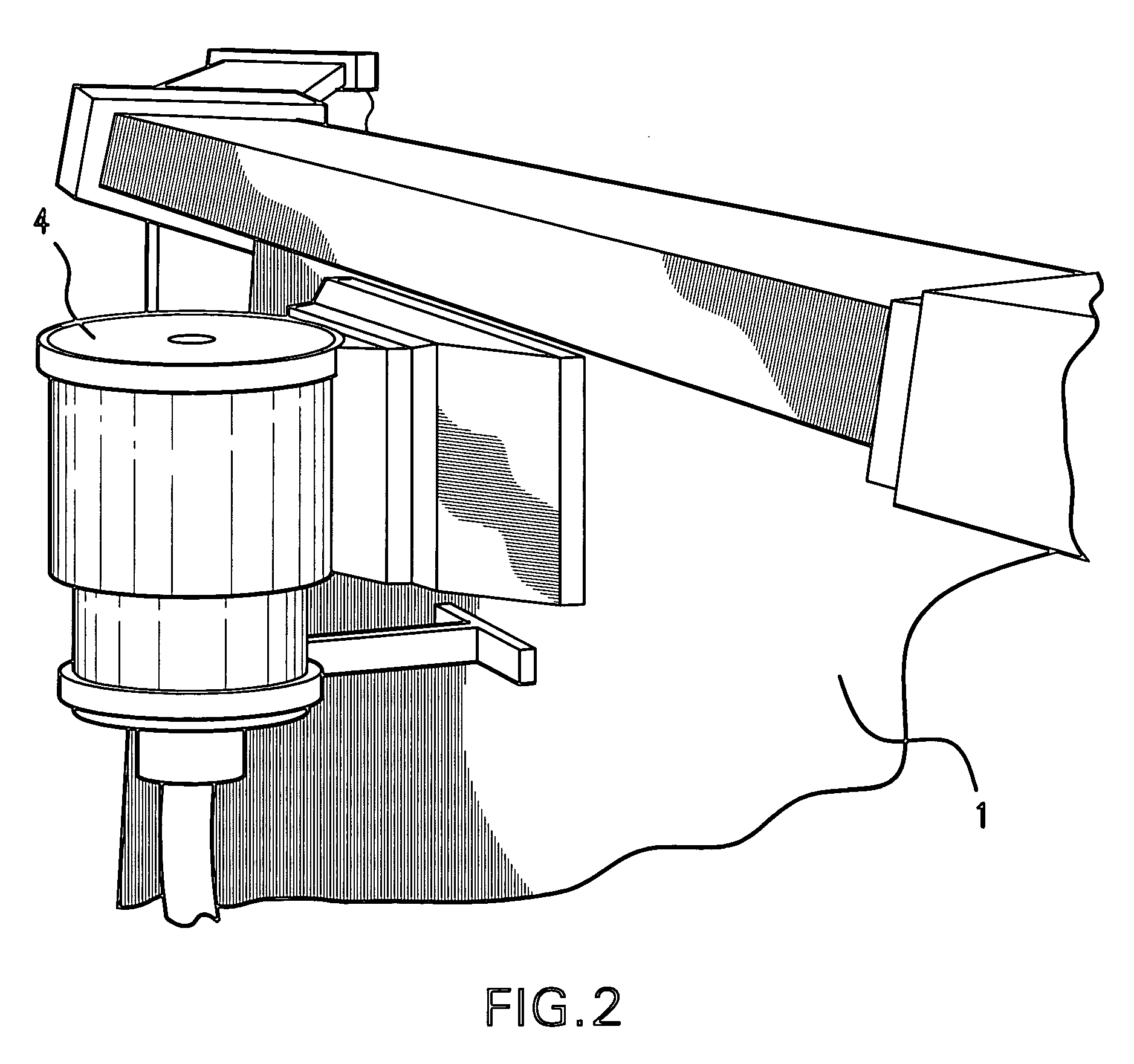Skimmer guard for a swimming pool
- Summary
- Abstract
- Description
- Claims
- Application Information
AI Technical Summary
Benefits of technology
Problems solved by technology
Method used
Image
Examples
Embodiment Construction
[0031] The basic operation of the present invention is illustrated in FIGS. 1-3. A swimming pool, or other pool, includes a wall 1. The wall includes a skimmer opening 2 which allows water from the pool to enter skimmer 4 which is located outside the periphery of the pool wall. In the illustration of FIG. 2, the pool is an above-ground structure, and the skimmer is plainly visible. The invention could also be practiced with an in-ground pool, in which case the skimmer may be located below ground level.
[0032] The skimmer opening 2 is bounded by frame 3, which is affixed to the wall, such as by screws, the frame being intended to comprise a permanent fixture of the pool. The frame includes flange 5, positioned along the periphery of the frame, as will be described in more detail later.
[0033] A skimmer guard 6 includes a peripheral lip 7, the lip being configured to engage the flange 5 by friction only. A plurality of holes 8 are formed in the skimmer guard.
[0034]FIG. 3 shows the sk...
PUM
| Property | Measurement | Unit |
|---|---|---|
| Friction | aaaaa | aaaaa |
Abstract
Description
Claims
Application Information
 Login to View More
Login to View More - R&D
- Intellectual Property
- Life Sciences
- Materials
- Tech Scout
- Unparalleled Data Quality
- Higher Quality Content
- 60% Fewer Hallucinations
Browse by: Latest US Patents, China's latest patents, Technical Efficacy Thesaurus, Application Domain, Technology Topic, Popular Technical Reports.
© 2025 PatSnap. All rights reserved.Legal|Privacy policy|Modern Slavery Act Transparency Statement|Sitemap|About US| Contact US: help@patsnap.com



